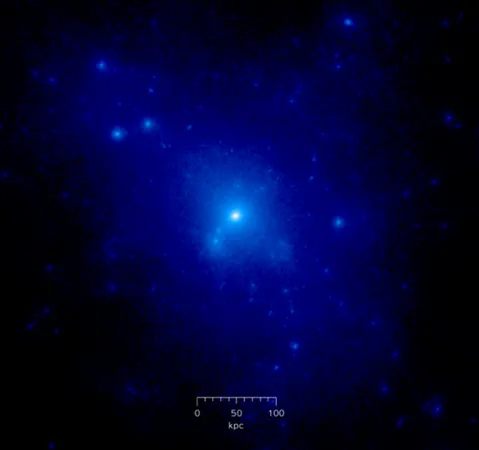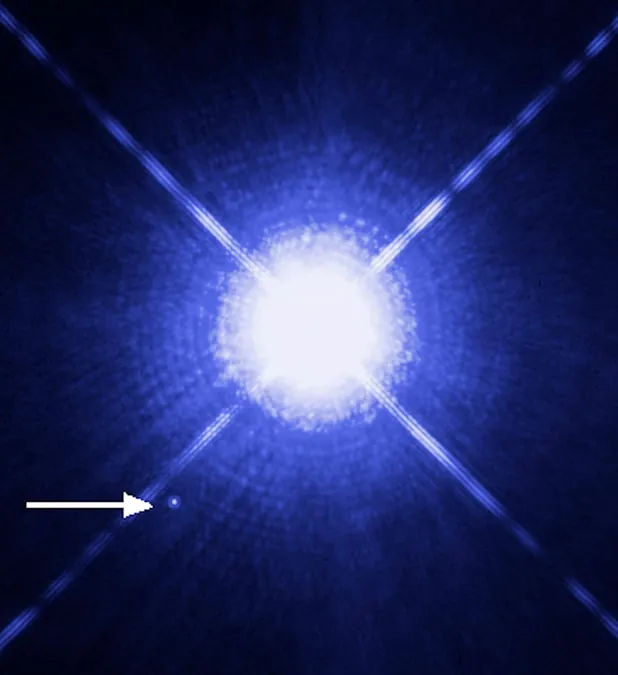
Scientists Discover First Dark Matter Sub-Halo in Our Galaxy!
2025-09-16
Author: Sarah
A Groundbreaking Discovery in Galactic Science!
In a monumental breakthrough, researchers at the University of Alabama at Huntsville (UAH) have spotted what could be the first dark matter sub-halo lurking in our Milky Way! This exciting revelation comes from the work of Dr. Surkanya Chakrabati and her dedicated team, who have been digging deep into one of the universe's most elusive mysteries.
What is a Dark Matter Sub-Halo?
But what exactly is a dark matter sub-halo? Think of it as a concentration of dark matter nestled within a larger dark matter halo—these halos are believed to constitute the foundational structures upon which galaxies are constructed. Dark matter generally interacts through gravity, drawing in normal matter and creating clusters that serve as scaffolding for galaxies.
The Challenge of Detection
Detecting sub-halos isn't easy; due to their relatively small size, astronomers have struggled to identify their gravity-induced signals because they blend into the cosmic backdrop. However, the research team utilized the unique properties of binary pulsars—pairs of stars where at least one is a pulsar emitting consistent energy bursts—to investigate potential signs of these dark matter structures.
Binary Pulsars: The Key to Unlocking Dark Matter?
Binary pulsars operate like cosmic clocks, making them ideal for measuring tiny gravitational effects. By carefully observing the gravitational pull affecting two specific binary pulsars, PSR J1640+2224 and PSR J1713+0747, the research team identified deviations that hinted at something more significant than ordinary matter.
Isolating the Rebel Gravitational Influence!
To reveal the presence of dark matter, the researchers had to rule out other gravitational influences, such as gravitational waves or the Shklovskii Effect, which can mimic dark matter's gravitational signals. Their careful calculations uncovered a compelling gravitational influence that couldn't be accounted for by any known baryonic matter.
Location and Mass of the Dark Matter Sub-Halo!
Their findings pinpointed this mysterious gravitational mass at about 2,340 light years away, with a staggering mass of roughly 24.5 million solar masses! To put that in perspective, the amount of regular matter that would produce such a gravitational effect is estimated to be over 100 times what we can currently observe in that region.
A New Era in Dark Matter Research!
This discovery not only marks the first detection of a dark matter sub-halo in our galactic vicinity, but it also opens the door for future research utilizing binary pulsars to unveil similar hidden structures throughout the universe. With astronomers continuously gathering data, we can expect more of these thrilling revelations in the near future!
Stay tuned—our quest to uncover the secrets of dark matter has only just begun!




 Brasil (PT)
Brasil (PT)
 Canada (EN)
Canada (EN)
 Chile (ES)
Chile (ES)
 Česko (CS)
Česko (CS)
 대한민국 (KO)
대한민국 (KO)
 España (ES)
España (ES)
 France (FR)
France (FR)
 Hong Kong (EN)
Hong Kong (EN)
 Italia (IT)
Italia (IT)
 日本 (JA)
日本 (JA)
 Magyarország (HU)
Magyarország (HU)
 Norge (NO)
Norge (NO)
 Polska (PL)
Polska (PL)
 Schweiz (DE)
Schweiz (DE)
 Singapore (EN)
Singapore (EN)
 Sverige (SV)
Sverige (SV)
 Suomi (FI)
Suomi (FI)
 Türkiye (TR)
Türkiye (TR)
 الإمارات العربية المتحدة (AR)
الإمارات العربية المتحدة (AR)